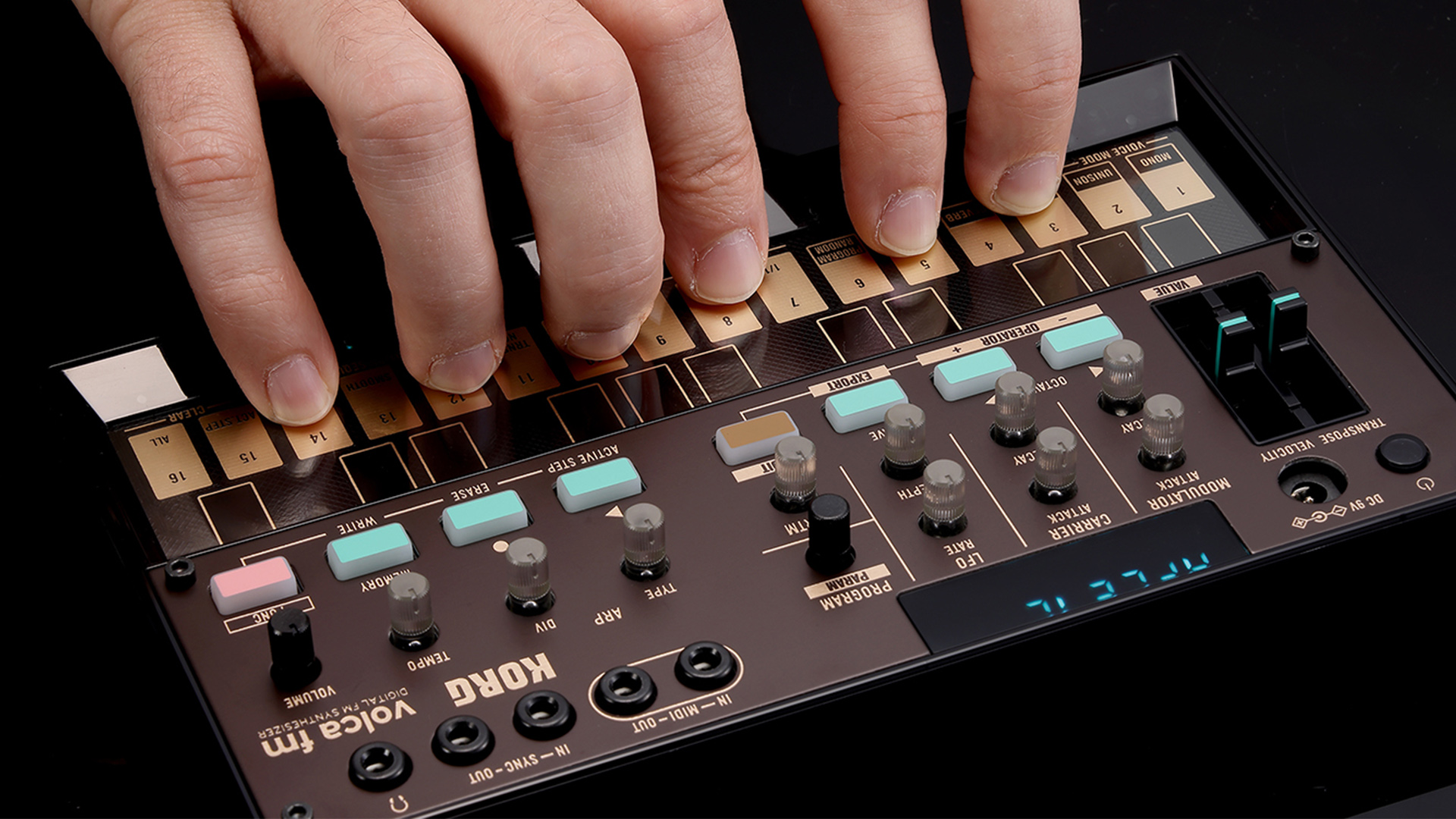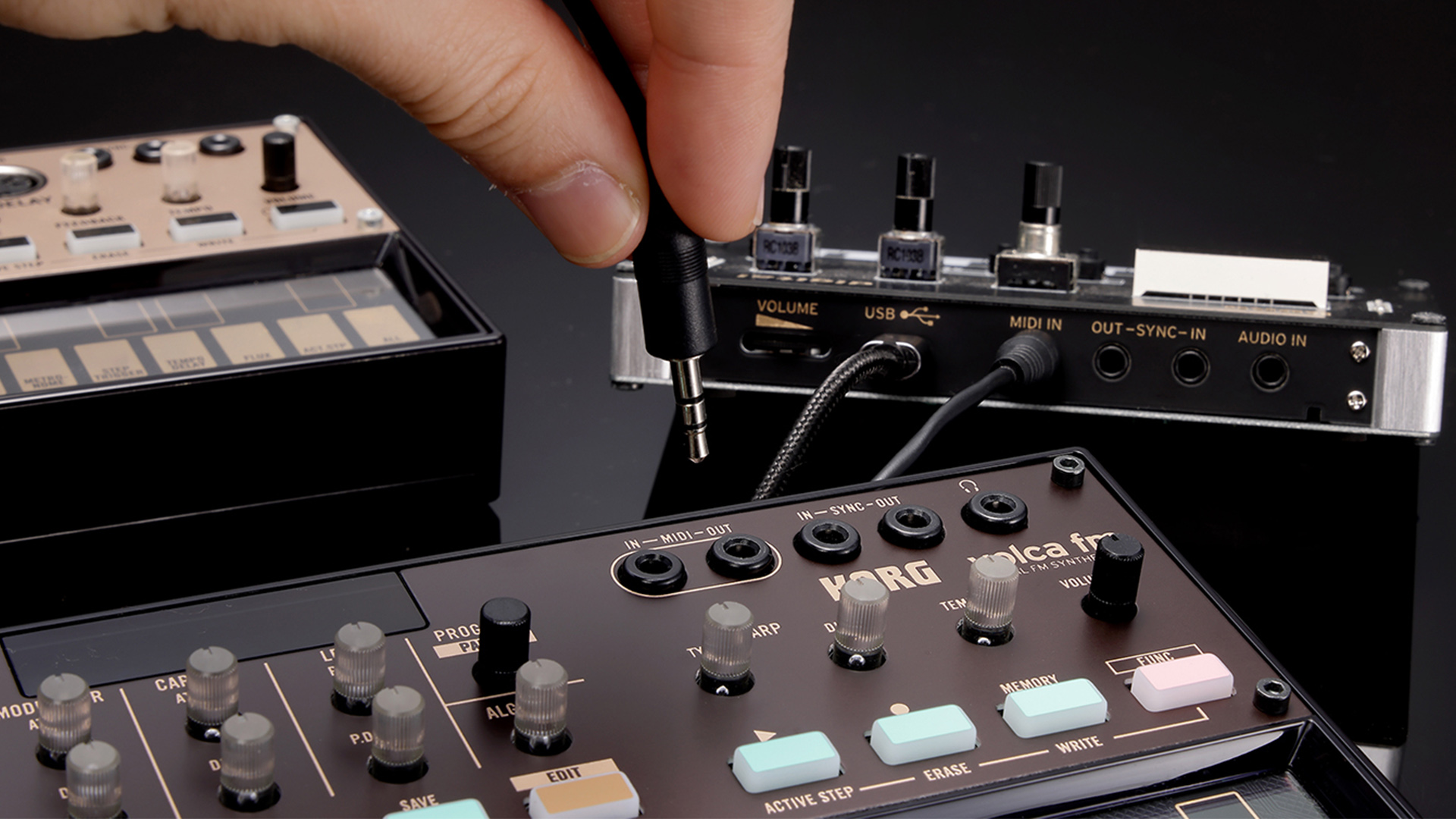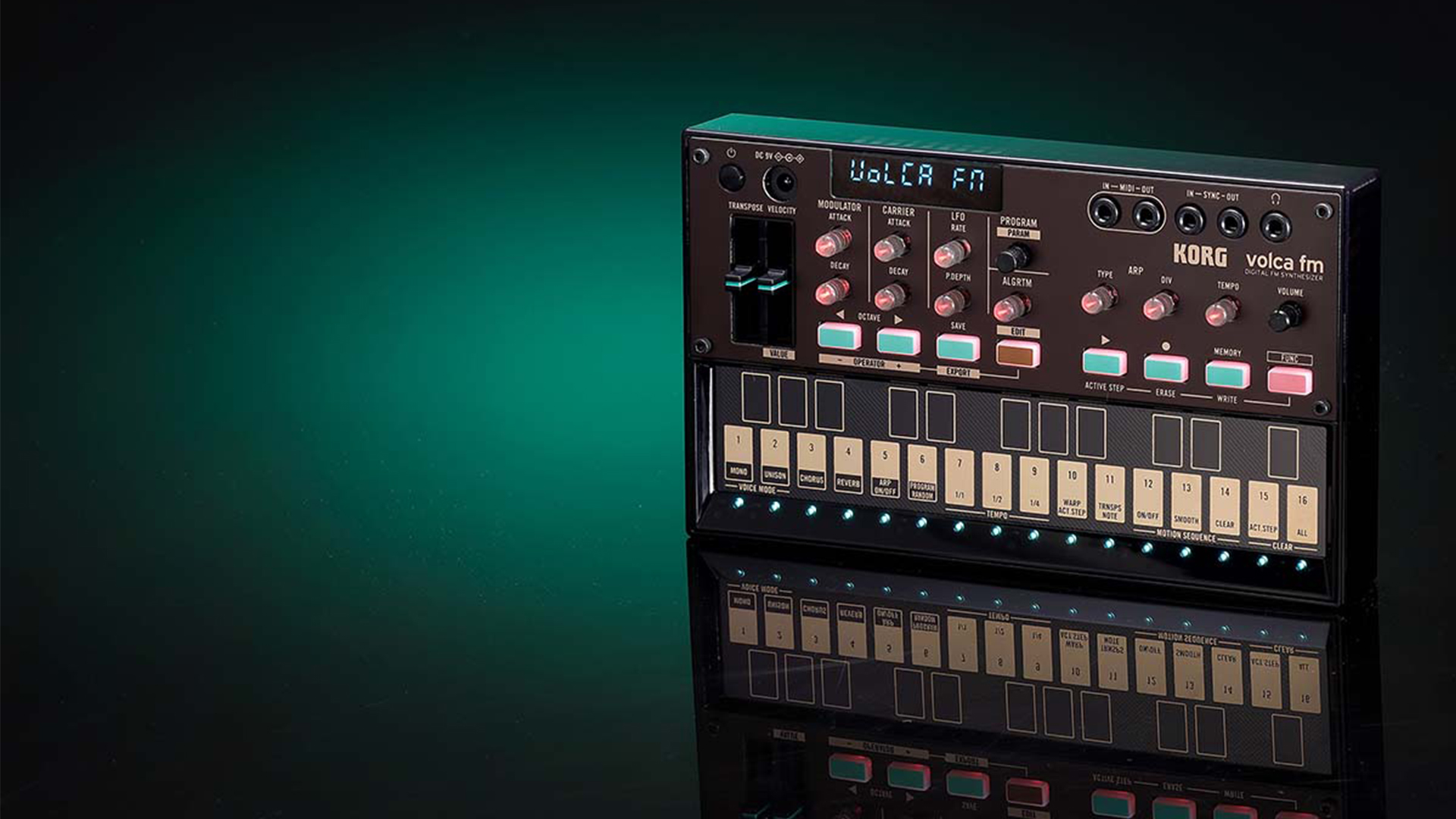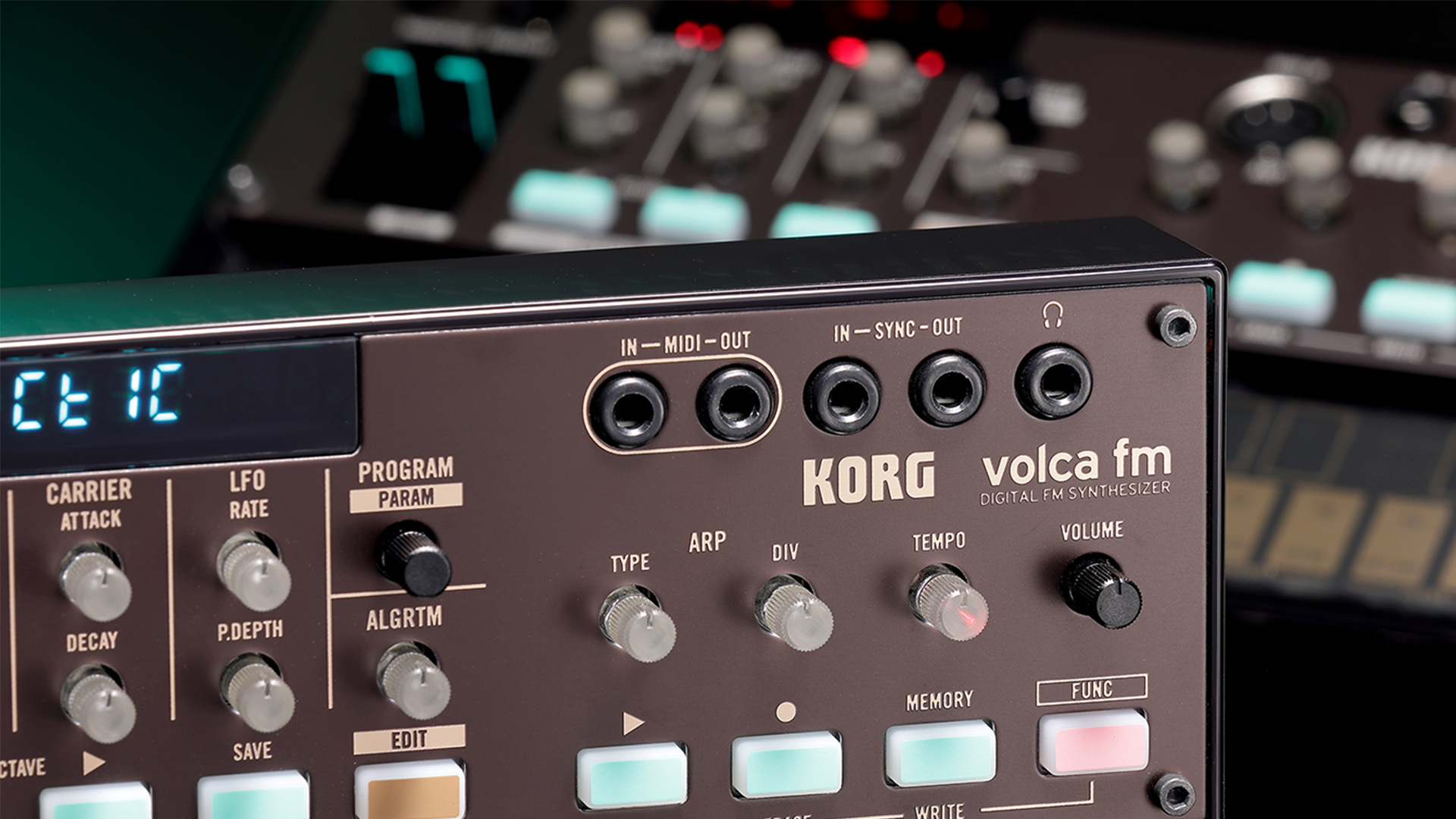Review: Korg Volca FM2 – A portable, fun way to access FM synth sounds for under $200
Releases in Korg’s Volca series of compact synths have slowed down in recent years, undoubtedly due to the departure Tats, the mastermind behind the line.
A few of the Volcas have been upgraded to a revised V2, with the most recent being a Korg Volca FM2 in 2022. This is a slightly updated take on one of the most popular of the original series, the Volca FM, which originally came out in 2016—so quite a few years back now!
Let’s take a look at what it does and see how it improves—or doesn’t —on the original design.
Features

Buy it new on Sweetwater, B&H, Thomann, or Amazon. Look for deals on Reverb.
The Volca FM2’s design will look familiar to anyone who’s seen the V1 edition. In fact, at first glance, they are difficult to tell apart! All of the controls, as well as input and output
connections, reside on the top of the synth, as does the touch capacitive keyboard that also functions to control system functionality.
The left of the instrument features two faders for Transpose and Velocity. There are a meager 8 mini-knobs for controlling the parameters of your sound; though its likely that you won’t be doing a huge amount of sound-scultping on the Volca FM2 anyway.
There is also a speaker on the bottom of the unit, but given its lo-fi character, there’s not much use for it. There’s a single, 1/8″ output jack labeled headphones. And lastly, the Volca FM2 is compatible with DX7 sysex patches so you can load your favorites from decades past.
The FM2 also features the famed 16-step Volca sequencer. It’s possible to store 16 sequences, each with their own saved preset sound. This sequencer allows users to motion record data from any clear knob, a similar paradigm as used on other Volca units.
This motion data can then be turned on and off separately from the note data per sequence. Furthermore, its possible to chain sequences together, and given the fact that each sequence can have its own time division, some fun happy accidents are sure to be found. The new version of the Volca FM features a few important tweaks to the winning formula.
First and foremost, the Korg Volca FM2 has double the voice count of the previous version — from 3 to 6. This alone greatly increases what’s possible with the FM2, as six voices is enough to play both chords and an accompaniment for 90% of use cases.
They’ve also made the synth engine responsive to velocity right out of the box. This was something that was only possible on the original via a third party firmware hack, so its nice to see that Korg have made this step unnecessary.
Korg also added a new reverb effect to the final output, which importantly, has a depth
control via a shift function. While you don’t get several modes, the reverb is a very nice touch and greatly increases the usefulness of the Volca FM2.
Lastly, the FM2 now features both MIDI in and out ports, albeit on ⅛” jacks. The original Volca FM only had a MIDI input via normal DIN jack, and the ability to use the Volca’s sequencer with other gear is quite enticing.
Korg has not included the MIDI adapters, so you’ll have to hunt those down on your own, but its well worth the asking price, especially if you are already familiar with the Volca sequencer.
In Use

Buy it new on Sweetwater, B&H, Thomann, or Amazon. Look for deals on Reverb.
Six voices give the Korg Volca FM2 much greater overall range, especially for chordal parts or layering. The fact that it’s velocity sensitive right out of the box (the old one could be made velocity sensitive via a third party firmware upgrade) is a nice bonus.
Most users are going to want to have velocity inform their playing, as that is one of the great joys of playing an FM-based synth. The velocity slider still works for controlling the FM2 via the built-in touch keyboard, however.
As mentioned above, that famed Volca sequencer can now be used with other gear due to the MIDI out port. While the sequencer is limited to sixteen steps, the ability to turn off and on active steps, as well as warp the overall length of the sequence accordingly, makes fun accidents much more likely.
The Program Random button is another highly useful addition to the instrument, as it means you can access those weirder cosmic FM tones without a lot of preset browsing or sound
tweaking. Just keep hitting the Random button till something you like pops up.
Having the additional reverb built-in also makes using the Korg Volca FM2 standalone much more fun.
Don’t forget that Func + Arp Divide controls the volume of the Reverb, which is essential!
Similarly, Func + Arp Type controls the level of the Chorus, which was not possible on the
original (it was an on or off type of affair).
To Be Critical

Buy it new on Sweetwater, B&H, Thomann, or Amazon. Look for deals on Reverb.
Being critical of the Korg Volca FM2 feels a bit silly, as the ubiquity of the range at this point in time
means you know what you’re getting in before you open the box, which is a very small synth and with a small keybed that is still tough to play accurately.
There are also MIDI ins and outs that are both on ⅛” jack as opposed to normal DIN jacks, even though these would have taken up much more space. It would have been nice if MIDI adapters were included (uses type A). The built-in speaker is still fairly useless and batteries still don’t last that long, unfortunately.
Lastly, the Metronome on/off has been made a system function that can only be accessed
when power cycling the FM2. Which is a bit unfortunate, as the original version, the metronome was accessed via a Func button combo.
Summing Up the Korg Volca FM2

Buy it new on Sweetwater, B&H, Thomann, or Amazon. Look for deals on Reverb.
This one might get lost in the mail back to Korg.
Leo Maymind is a producer, DJ, and writer living in Los Angeles, CA. He is obsessed with sound, and you can reach him at lmaymind@gmail.com.
Please note: When you buy products through links on this page, we may earn an affiliate commission.






